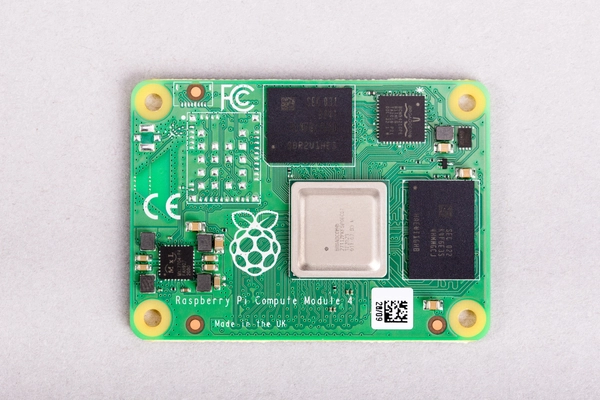Embracing the ‘Emotional Hype Cycle’ allows enterprises to adopt Gen AI responsibly
Discover how emotions—not just data—are shaping enterprise decisions around generative AI adoption.

The adoption of technology can spark all kinds of emotions – not just in terms of the tech itself but also the brands behind them. As consumers, it’s widely accepted we often allow our emotions to influence our tech purchasing decisions. But to what extent do businesses or other large organizations use an emotional response to help make similar purchasing decisions?
The reason I ask that is because there’s a suspicion that as IT professionals – whether we like it or not – we’re increasingly relying on an emotional response to influence our technology choices. And increasingly, we’re seeing this in relation to the adoption of generative AI (Gen AI) solutions.
This may seem like an odd observation to make, especially when making objective investments in technologies such as SaaS platforms or security solutions where everything should be benchmarked against KPIs, ROI and other measures.
And yet, a clear pattern of behavior is emerging that links the adoption of Gen AI with a more ‘emotional’ purchasing response. Here at Tanium, we call it the ‘Emotional Hype Cycle’, and it’s already being used to influence our IT strategy. And while it leans on Gartner’s Hype Cycle, the big difference is the emotional factor and the important part this plays.
The ‘Emotional Hype Cycle’ explained
The easiest way to explain it is to look briefly at all eight stages of the curve to see just how much of an emotional rollercoaster it can be for enterprises and employees when making decisions about technology:
Triggered: A new innovation breaks onto the scene and becomes the ‘latest thing’. It’s not just new – the tech can be challenging and disruptive, triggering a range of emotions. Generative AI isn’t just another breakthrough -- it’s a seismic shift that has the potential disrupt industries and reshape the way we think about technology itself. As a game-changing technology, it has the ability to ignite excitement and deep unease and mistrust in equal measure.
Hyped: People, businesses, sectors and governments get caught in the excitement of it all. While there may be some notable high-profile successes, there are plenty of failures along the way.
Rejection: After the excitement, it’s time for the post-hype headache as organizations face setbacks such as the technology failing to live up to expectations. As technology is rejected, some organizations will prohibit adoption. As a result, staff are left in limbo and shadow IT emerges.
Doubt: Some may view this rejection as a failure. Instead, the period – which is often shaped by caution, doubt and skepticism – allows enterprises to assess the technology with greater objectivity. It provides breathing room for organizations to consider ethical factors such as bias, as well as other issues like privacy and protection. Hesitancy is the default emotion here.
Comfort: Over time, organizations tend to develop a sense of gradual acceptance as they build their own test beds and case studies in controlled environments. To start with, access is limited, but these pilots are useful since they help to manage excitement and expectation.
Habitual: Now things start to pick up. Businesses get into the rhythm of using and applying the technology thanks to the establishment of common standards and governance. It’s at this point that we see the emergence of fair and effective user policies – along with more established working patterns – that not only set the tone but also the foundation for enterprise-wide rollouts.
Social: The technology becomes part of the social fabric of the organization, with adoption now widespread. Critically, when it comes to the technology’s strategic role, there is a connection and alignment between IT and the wider business.
Creative: This is a transformative stage for users and the enterprise as people use the technology to innovate and operate in productive new ways. Not only is this rewarding, but it’s also an early indicator of technology maturity.
What’s clear is that the Emotional Hype Cycle provides a clear roadmap to help organizations move from uncertainty to maturity as they adopt Gen AI. At its heart, it emphasizes a thoughtful, structured approach to integrating new technologies, ensuring decisions are guided by governance, ethical considerations and strategic alignment.
Practical strategies that deliver the smooth adoption of Gen AI
Crucially, it acknowledges human tendencies to react to ‘feelings’ or ‘hunches’ while offering practical strategies to help smooth the adoption of Gen AI.
For instance, the ‘Doubt’ phase calls for a rigorous, ethical assessment of AI, addressing concerns like bias, privacy and security. This is followed by the ‘Comfort’ stage, which encourages organizations to run controlled pilots and test beds, allowing enterprises to experiment with Gen AI’s potential in a safe and manageable way.
Similarly, as organizations progress, the framework calls for the incremental development of governance and standards, something that is central to the ‘Habitual’ stage. In terms of a strategic approach, it acts as a brake on runaway excitement or hysteria while helping to establish processes and protocols for responsible use.
Wherever you look, the Emotional Hype Cycle offers a way to navigate the highs and lows of technology adoption. It empowers organizations to balance excitement with caution while embracing Gen AI in a way that is measured. Crucially, it allows businesses to embrace Gen AI as a transformative force for innovation and productivity.
We provide an extensive list of the best AI tools.
This article was produced as part of TechRadarPro's Expert Insights channel where we feature the best and brightest minds in the technology industry today. The views expressed here are those of the author and are not necessarily those of TechRadarPro or Future plc. If you are interested in contributing find out more here: https://www.techradar.com/news/submit-your-story-to-techradar-pro











![Here’s the Pebble smartwatch reboot in action, and how much tariffs might cost you [Video]](https://i0.wp.com/9to5google.com/wp-content/uploads/sites/4/2025/03/core-2-duo-smartwatch-3.jpg?resize=1200%2C628&quality=82&strip=all&ssl=1)






















































































































